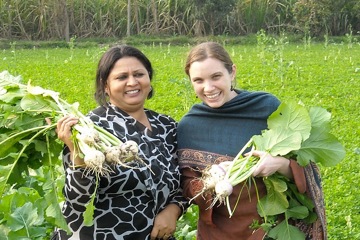
Photo: Duarte Carreiro
I watch Nasreen as she carefully measures out four entire cups of ghee. I feel like I’m breaking out just being in the kitchen with this concoction. Four cups of clarified butter, almost pure saturated fat, is being used for just one dish. The golden globs sizzle and crackle as she tosses in the cows’ feet.
“You know how I learned cooking?” asks Nasreen. “From my mother. Before marriage, I learned everything. How to make chapatis, biryani, kabobs, chicken, mutton…so many things! Before marriage I was so smart and slim, but now I am very healthy,” she boasts as she makes the wrestler pose that inevitably accompanies the word ‘healthy’ in Pakistani English.

